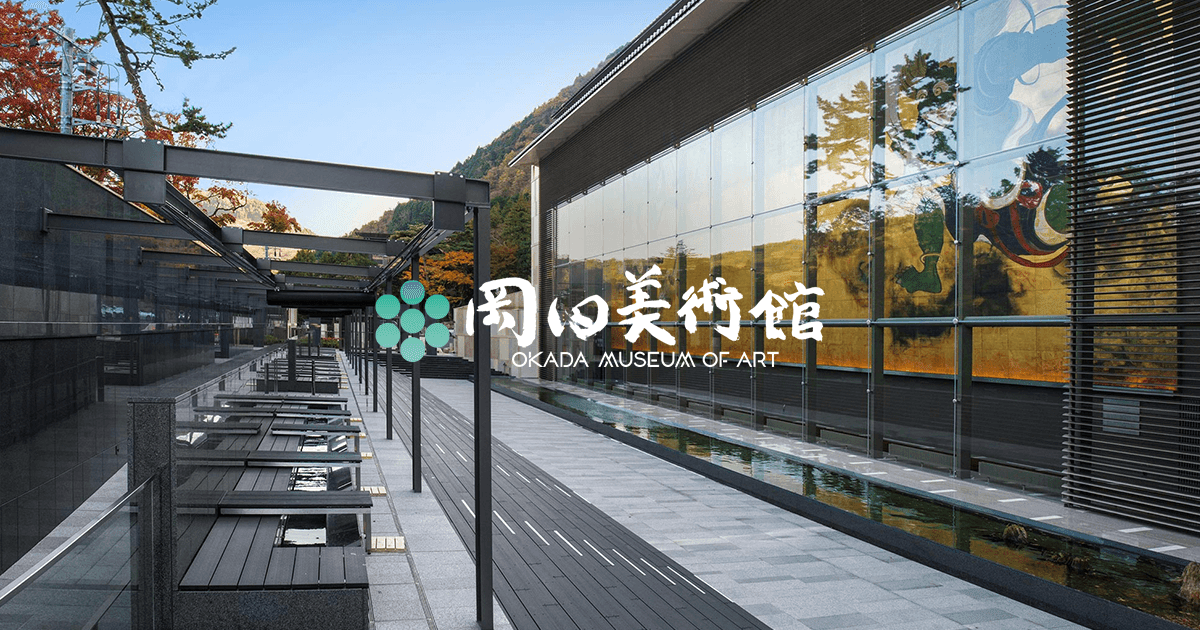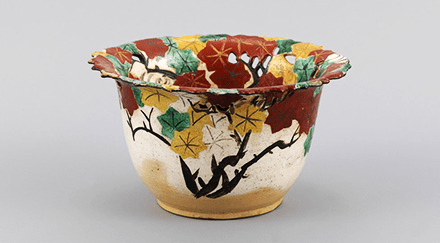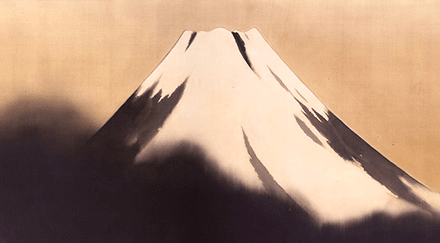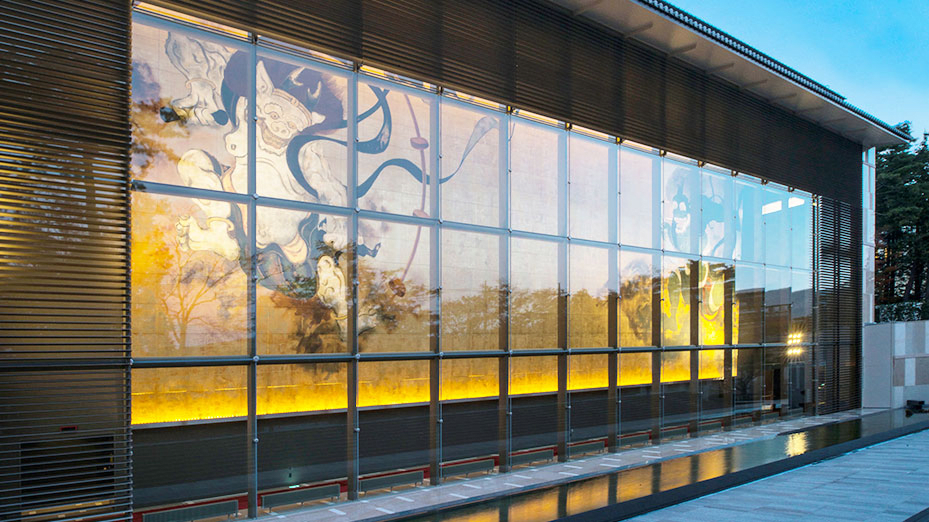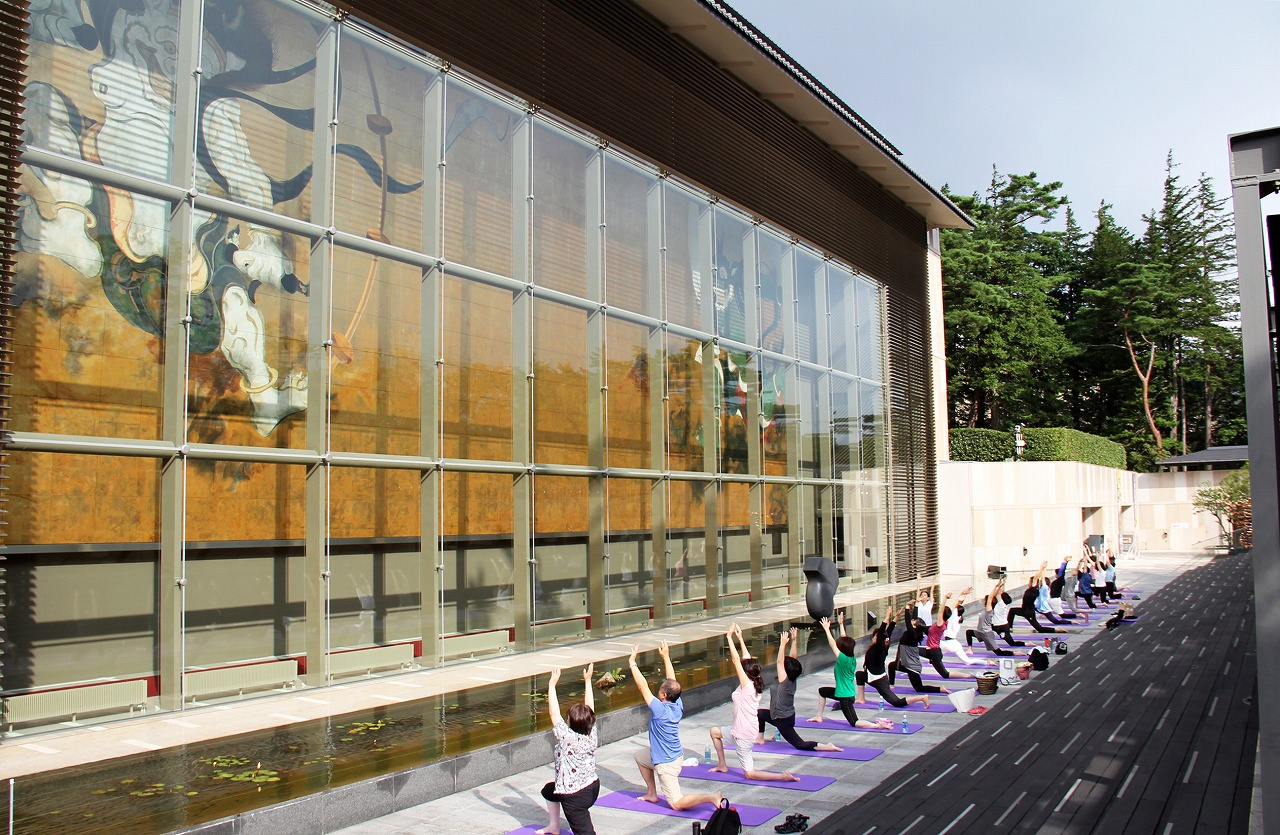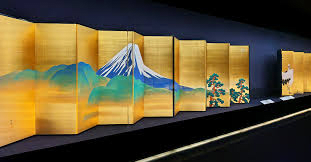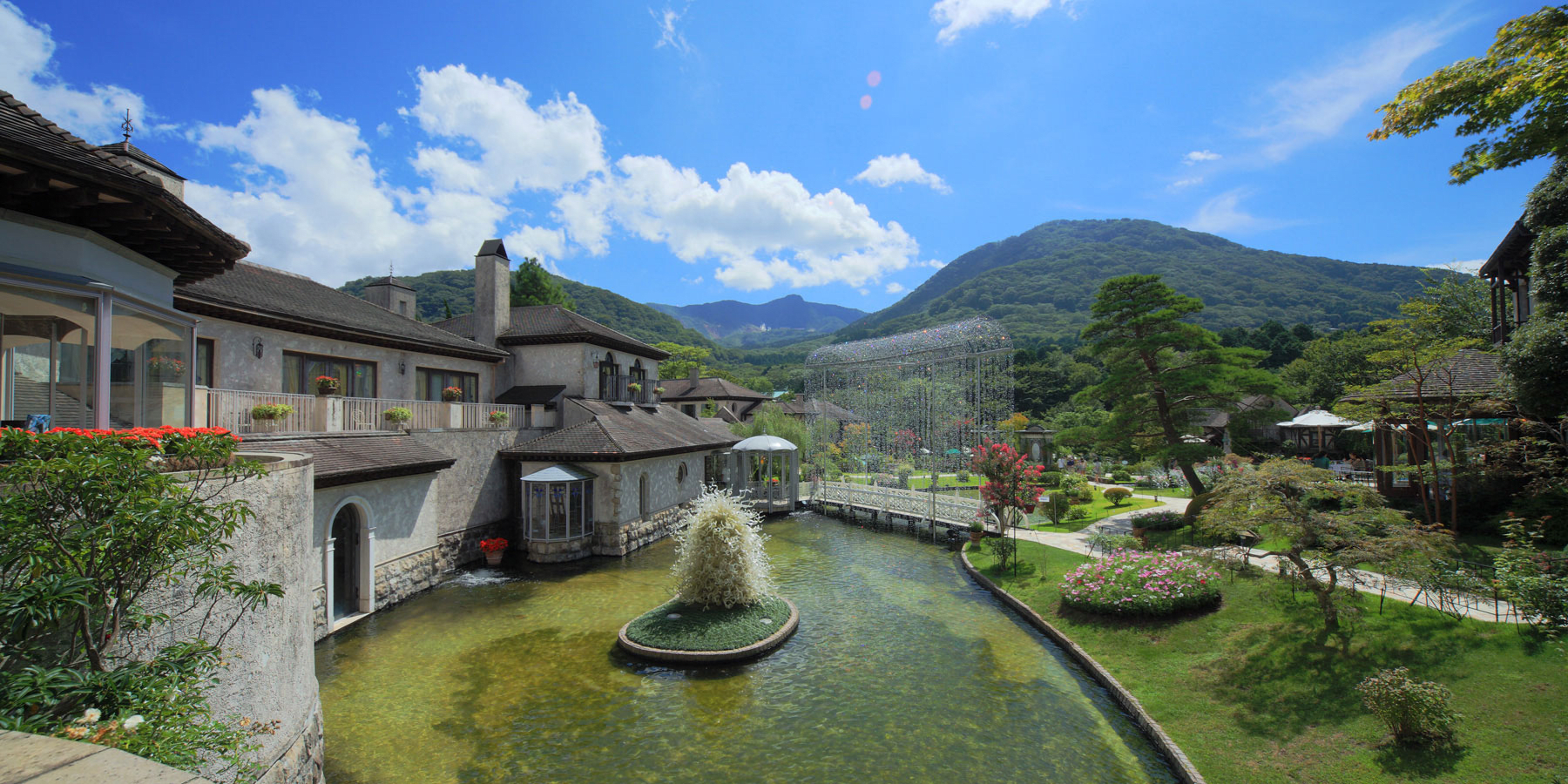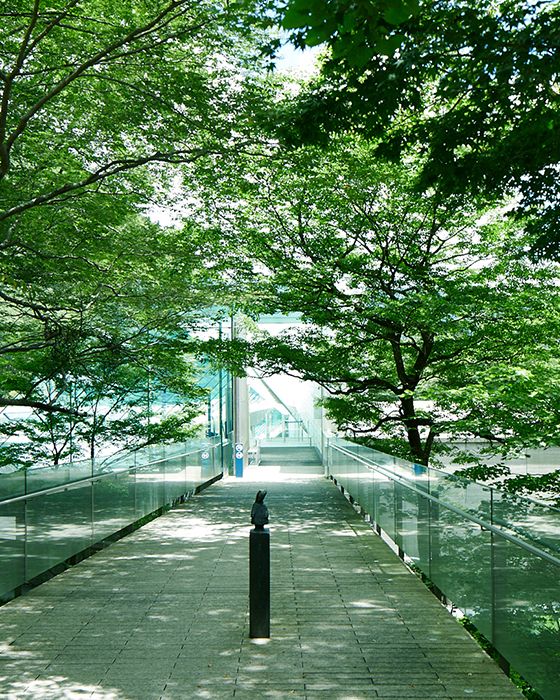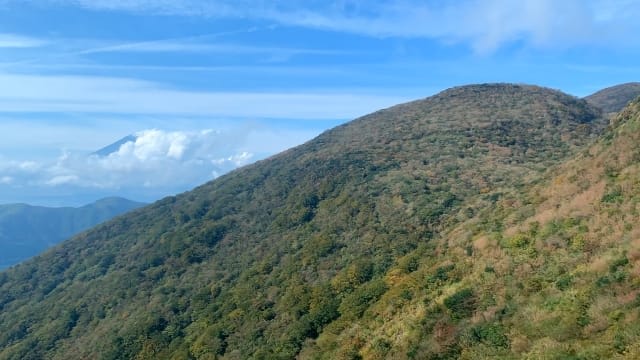Explore the Okada Museum of Art: Hakone's Premier Collection of Japanese and East Asian Masterpieces
Hakone, offering beautiful views of Mt. Fuji, has been a famous destination known both domestically and internationally as one of the Kanto region's premier resort areas for over 100 years.
With its climate optimal for preserving art collections and its popularity among tourists, Hakone is respected for having numerous museums with high potential in terms of both collection content and space.
Touring museums where you can leisurely enjoy sculptures and artworks that harmonize with Hakone's magnificent nature is recommended for those who want to spend time quietly away from the hustle and bustle of the city. In this article, we will introduce recommended art spots, led by the Hakone Okada Museum of Art, which harmonizes with the natural surroundings.
Throughout Japan, including Hakone, Magical Trip offers guided tours where you can explore local history, traditions, and food culture in depth with local guides.(Hakone Full Day Chartered Private Tour: Art & Nature)
Our most popular tour "Tokyo Bar Hopping Night Tour in Shinjuku" was ranked as Tripadvisor's #1 tour in 2024.

For tourists visiting Tokyo, why not try a private car tour that lets you efficiently visit multiple attractions in a single day? With expert guides who know all the best spots, you can fully experience the region's traditions and rich food culture even in just one day.
These tours include hotel pickup and drop-off service, allowing you to visit attractions stress-free and efficiently. If you're interested in nature-rich destinations like Hakone and want to explore Japan's history and traditions while avoiding crowds, these tours are perfect for you.
・Hakone Full Day Chartered Private Tour: Art & Nature
・Mt. Fuji Full-day Nature Guided Tour with a Private Chartered Car & Guide
The Okada Museum of Art: A Museum Featuring Important East Asian Artistic Works
The Okada Museum of Art was established in 2013. It is one of Hakone's largest museums, bringing together Japanese and Eastern art pieces and archaeological artifacts from ancient to modern times, primarily from Japan, China, and Korea.
Kowakudani, which was developed as one of Kanto's premier resort areas in the late 1800s, became home to traditional ryokans and hotels. The Okada Museum of Art was built on the former site of "Kaikatei," a hotel that catered to Westerners.
The 6,300-square-meter grounds feature modern architecture utilizing Kowakudani's sloping terrain and a Hakone-style landscape that integrates with nature.
It is a place where visitors can experience the history of magnificent art pieces from Japan and Asia while enjoying peaceful and enriching moments.
The Author, a Museum Enthusiast, Explains Why the Okada Museum of Art is Popular Among Foreign Visitors, Along with Its Attractions
A Vast Collection of Ceramics Primarily from Japan, China, and Korea
Source:Official website
The first floor is dedicated to Chinese and Korean ceramics, considered the face of the Okada Museum of Art.
The Chinese ceramics collection, featuring works from ancient times through the Qing Dynasty (1636-1912), is among the finest in Japan.
In the Korean ceramics section, visitors are drawn to the delicate beauty of Goryeo celadon and Joseon Dynasty (1392-1897) white porcelain. In the dimly lit exhibition rooms, spotlights illuminate each piece, vividly highlighting the beauty of their enchanting colors and patterns.
The second floor primarily displays Japanese ceramics and glassware. The Japanese ceramics exhibition centers on Bizen ware, which was influenced by ceramic techniques from the Korean Peninsula, along with clay figurines and haniwa.
Various Works by Japanese Artists Spanning Different Eras
Source:Official website
The museum's painting collection is rich in Japanese works from the 17th century to the modern era. The collection houses numerous Rinpa works, which emerged in early 17th century Kyoto and brought a new design style to Japanese painting, as well as the globally popular Ukiyoe (paintings from the 17th to early 20th centuries depicting customs, landscapes, Kabuki actors, and beautiful women).
The collection features works by renowned artists such as Kitagawa Utamaro and Katsushika, names familiar to almost everyone, making it enjoyable even for those new to Japanese painting. The highly decorative Rinpa style, known for its dynamic composition and use of gold and silver leaf, connects with the museum's iconic large mural "KAZE TOKI," and viewing both will deepen your understanding.
The Overwhelmingly Powerful Large Mural "Wind Time"
Source:Official website
"KAZE TOKI" is a massive mural created by Japanese painter Fukui Kotaro, measuring 12 meters high and 30 meters wide. It was creatively reproduced as an homage to "The Wind and Thunder Gods," a national treasure by Tawaraya Sotatsu (one of the founders of Rinpa) housed at Kennin-ji Temple in Kyoto. The work, created on 640 aluminum panels with brass foil pressing, beautifully expresses the fierceness of the wind and thunder gods with a divine radiance.
Incidentally, Fukui Kotaro has held solo exhibitions in Japan, New York, Shanghai, Germany, and other countries. Currently maintaining a studio in New York, he is gaining attention as an internationally active artist.
Popular Foot Bath Café Where You Can Relax While Viewing "Wind Time"
Source:Official website
In front of the large "KAZE TOKI" mural of the wind and thunder gods is an Ashiyu (a bathing method where only the feet are immersed in hot water to promote blood circulation) with 100% flowing hot spring water, allowing visitors to relax while gazing at the large mural.
The alkaline water quality is perfect for recovering from fatigue after viewing the art at the Hakone Okada Museum of Art, making it a popular spot for easy refreshment. Why not spend a peaceful time enjoying coffee or Japanese parfait? After bathing, you can resume exploring the garden with lighter steps and fully enjoy the Hakone Okada Museum of Art experience.
Regular Morning Yoga Events in Front of "Wind Time"
Source:Official website
Enjoying yoga in the clear morning air of Hakone is another luxurious and meaningful experience. Practicing yoga while facing the large wind and thunder god mural will surely charge you with energetic power.
Nearby hotels offer plans that include yoga and meals, so it's worth checking them out. We encourage you to experience this unique way to enjoy the Hakone Okada Museum of Art.
Architecture Design in Harmony with Nature: The Hakone Okada Museum of Art
Source:Google Maps
The Hakone Okada Museum of Art features a unique and sophisticated architectural design that harmonizes beautifully with nature. The modern five-story building nestles into the sloping landscape, with a spectacular 15,000 square meter garden spreading behind it—a truly magnificent location that adds to the museum's charm.
Visitors to the Hakone Okada Museum of Art will find themselves surrounded by lush natural forests, ponds, and waterfalls that integrate seamlessly with the structure. This grand-scale experience, characteristic of a hot spring and tourist destination like Hakone, is sure to fill your heart with satisfaction.
Inside, the museum presents a refined space where floors, walls, and ceilings are unified in black with subdued lighting to effectively showcase the artworks. This solid space, distinctly separate from the outside world, allows visitors to quietly immerse themselves in the history and mystical world of Oriental art.
Three Must-See Artworks at the Hakone Okada Museum of Art, Selected by an Art Museum Enthusiast
1. Japanese and Oriental Ceramics Collection (1st and 2nd Floor Exhibition Rooms)
Source:Official website
One distinctive feature of the Hakone Okada Museum of Art is its extensive Japanese ceramics collection. The museum is particularly famous for its rich collection of works by Nonomura Ninsei and Ogata Kenzan, who are considered masters of Kyoto pottery (Kyoyaki). Kyoyaki refers to pottery generally made in Kyoto since the late 16th century, and the prototype of white pottery decorated with colored paintings is said to originate with Ninsei.
Among the museum's holdings, especially noteworthy are the "Important Cultural Property Incense Burner with Esoteric Buddhist Implements Design" (left photo, by Nonomura Ninsei) and the "Bowl with 'Tatsutagawa' Autumn Foliage and Stream Design in Openwork" (right photo, by Ogata Kenzan), both designated as Important Cultural Properties. The modest beauty of their delicate paintings will surely take your breath away. Incidentally, Kenzan's Soribachi bowl, created by Ninsei's disciple, is highly regarded as a masterpiece that encapsulates the splendor of autumn in Japan.
2. Special Exhibitions (3rd and 4th Floor Exhibition Rooms)
Source:Official Instagram
Various special exhibitions that focus on "gold folding screens" (photo), the star of Japanese art, and other perspectives invite visitors into Japan's unique world of beauty.
Past programs have allowed visitors to experience Japan's distinctive sensibility through paintings and crafts expressing seasonal customs like Hanami (cherry blossom viewing), Tsukimi (moon viewing), and Hanabi (fireworks viewing). These special exhibitions, curated across different time periods, may be the most accessible and direct way to understand the Japanese aesthetic sense—gorgeous yet somehow modest.
3. Buddhist Art (5th Floor Exhibition Room)
Source:Official website
After viewing the museum from the first floor up, the climax of the exhibition is the 5th floor, a specialized floor for Buddhist art. Here, you'll find birth Buddhas created since the 6th century, as well as Buddhist paintings, scriptures, and ritual implements.
The "Seated Bhaisajyaguru" from the 8th century, displayed at the front, is designated as a National Important Cultural Property. This Buddha resides in the eastern Ruriko Paradise (Gokuraku Paradise) of the Buddhist world, curing people's illnesses, extending life, and bringing peace—a Buddha of worldly benefits. Its gentle and calm expression will mysteriously heal your heart.
Access to the Hakone Okada Museum of Art
- Address: 493-1 Kowakidani, Hakone-machi, Ashigarashimo-gun, Kanagawa Prefecture
- Access: From Hakone Yumoto Station, take the Hakone Tozan Line to "Kowakidani" Station, then transfer to the Izu Hakone Bus or Hakone Tozan Bus and get off at "Kowakien" (right there)
- Official Website: https://www.okada-museum.com/
Recommended Art Museums to Visit Along with the Hakone Okada Museum of Art for Art Lovers
I've carefully selected art spots with unique character that rival the Hakone Okada Museum of Art. All are pleasant places that blend with Hakone's natural environment, and I recommend spending ample time at each location.
The Hakone Open-Air Museum
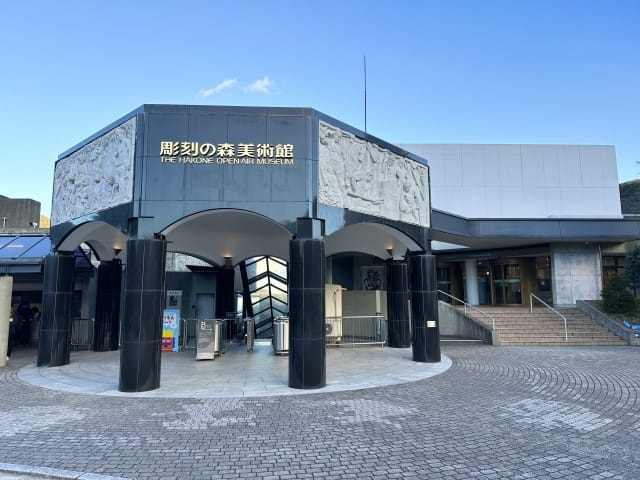
Japan's first outdoor museum featuring an expansive 70,000 square meter sculpture garden.
The museum boasts impressive facilities appealing even to non-art enthusiasts, including the "Picasso Pavilion" exhibiting numerous works by artists who have made their mark in art history such as Pablo Picasso and François Auguste René Rodin, and "The Happy Symphony Sculpture" with its tall tower walls entirely decorated with stained glass.
The vast garden is dotted with numerous giant sculptures and unique artistic works. You can enjoy photogenic landscapes unique to an outdoor museum, such as sculptures quietly standing in open natural spaces and works that harmonize with Hakone's natural environment.
Hakone Venetian Glass Museum (Glass Forest)
Source:Official website
The Hakone Venetian Glass Museum specializes in the world of glass.
It mainly exhibits Venetian Glass that captivated European nobility from the 15th to 19th centuries, along with works by contemporary glass artists.
The collection includes ancient glass from before the Common Era, the beautifully installed outdoor "Corridor of Light," and seasonal special exhibitions that allow visitors to fully experience the fantastical world of glass.
The museum is divided into two main buildings: the "Venetian Glass Museum" and "The Contemporary Glass Art Museum." The Venetian Glass Museum, designed to resemble a noble's mansion, displays works by artists active from the 15th to 19th centuries. "The Contemporary Glass Art Museum" features works from the 19th century onward, showcasing glass's new possibilities.
Pola Museum of Art
Source:Official website
The Pola Museum of Art displays the collection of the former owner of Pola, a leading Japanese cosmetics manufacturer.
The museum houses masterpieces from Japan and abroad, focusing on works of French Impressionists such as Claude Monet and Pierre-Auguste Renoir. One of the featured exhibits is Claude Monet's "Waterlily Pond," which shows a mystical blend of a pond, water lilies, and a Japanese-style drum bridge.
Visitors can also appreciate Pierre-Auguste Renoir's work "Portrait of a young woman in a lace hat" and Vincent Van Gogh's late-period work "Flower Vase with Thistles."
Another attraction of the Pola Museum of Art is the "Forest Walking Path," where you can stroll while experiencing nature. Take time to wander at your leisure, immersing yourself in the beautiful swaying trees, sounds of the wind, and chirping birds.
